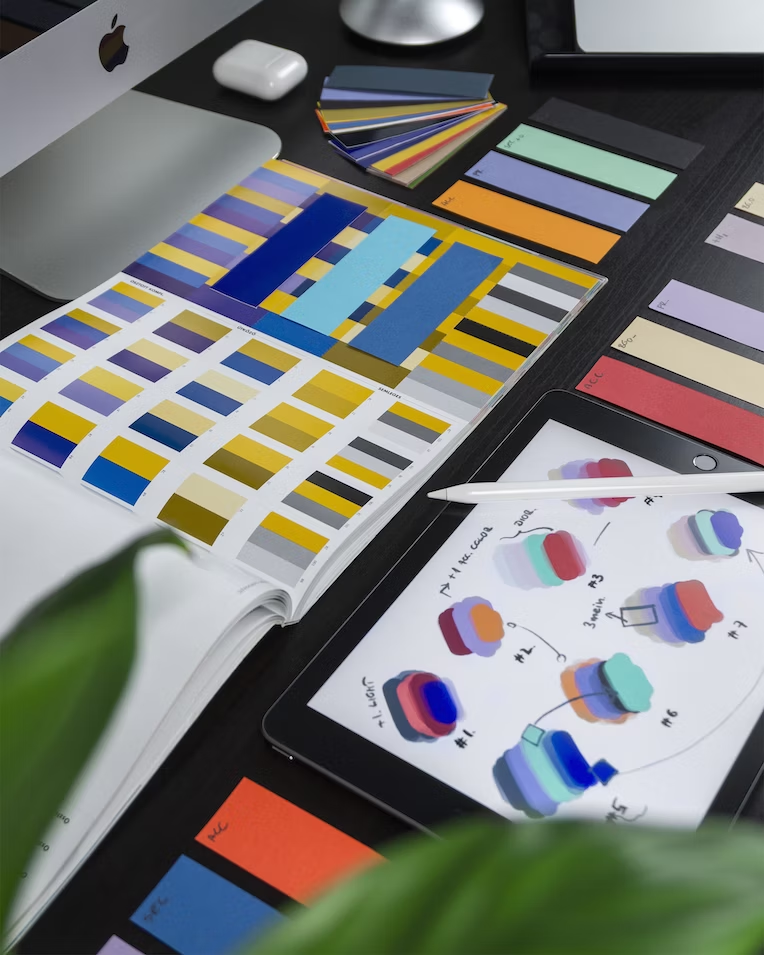Websites are no longer restricted to simple design and static content; they have evolved into sophisticated information and functionality ecosystems. While complexity can improve the user experience and create deeper interactions, it also poses a challenge: how can we assure that people can easily traverse and grasp these elaborate designs? This essay investigates the significance of simplifying complicated web designs to make them more user-friendly.

The Evolution of Complex Web Designs
Web design evolution may be linked to a variety of causes, including technological developments, higher user expectations, and the growing need for dynamic and engaging digital experiences. Websites today include dynamic components, multimedia information, and interactive features that make them aesthetically appealing and engaging. However, the disadvantage of these intricate designs is that they can overwhelm users, making it difficult for them to access information or accomplish activities efficiently.
User-Friendliness: What Is It?
Websites that are made with the requirements of the user in mind tend to be more user-friendly. To make websites that are effective and simple to use for users rather than designers, it employs design approaches that put the user first. As a web design agency, your web design service must focus to end-users.
But it becomes a little trickier beyond this fundamental explanation. One of the trickiest aspects of website design is making it user-friendly.
User-friendliness has two main objectives that designers must prioritize: clarity and utility. To put it another way, front-end developers and UI designers are tasked with creating websites that not only appear attractive but also work as intended by the user. Even for the most seasoned designers, it’s no easy feat.
Understanding User Behavior and Needs: The Importance of UX/UI
Understanding user behavior and demands is critical for effectively simplifying complicated web designs. The UI/UX design, User Experience, and User Interface, are critical to gaining this knowledge. UX design focuses on improving a website’s usability and accessibility, ensuring that users can fulfill their objectives efficiently. UI design, on the other hand, concentrates on the visual components of an interface, such as layout, typography, and color schemes, to produce an intuitive and aesthetically appealing interface.
Designers may acquire insights into consumers’ preferences, expectations, and pain spots by performing user research, such as surveys, interviews, and usability testing. They may use this information to simplify complicated designs by prioritizing vital aspects, eliminating needless clutter, and increasing overall usability.
Navigation and Information Architecture Simplified
One of the most difficult aspects of complicated web design is designing a simplified navigation system that allows people to travel across the website with ease. Clear and easy navigation is critical for users to effectively obtain the information they want and complete their jobs.
Designers may reduce the number of menu selections, organize relevant material, and provide clear labels and tooltips to improve navigation. Including a breadcrumb trail or a search box on your website can also assist people in easily finding certain pages or information.
By structuring material logically and hierarchically, information architecture plays a critical role in simplifying complicated designs. By categorizing material and utilizing clear headers and subheadings, visitors can explore and absorb the information offered more easily.
Visual Organization and Information Design
Visual hierarchy becomes even more critical in complicated web designs to guide users’ attention and improve comprehension. Designers may construct a hierarchy of significance by employing visual signals like size, color, contrast, and font, highlighting vital aspects and decreasing cognitive burden.
Important information should be shown prominently, whereas secondary or supporting content should be provided less prominently. Consistency in a visual hierarchy across different pages and sections of the website aids visitors in becoming acquainted with the design and effectively locating content.
Mobile-Friendliness and Responsiveness
With the increased usage of smartphones and tablets, it is critical to ensure that sophisticated web designs are responsive and mobile-friendly. Users demand a consistent experience regardless of the device, and sophisticated designs might be difficult to adapt to multiple screen sizes and resolutions.
Designers may make complicated mobile designs simpler by prioritizing content, optimizing pictures and media assets for faster loading times, and employing responsive design strategies. Touch-friendly navigation and swipe motions, for example, can improve the usability of complicated designs on smaller displays.
Considerations for Accessibility
It is critical not to forget accessibility when striving to simplify complicated web designs. Web accessibility guarantees that people with impairments can properly access and utilize websites. Designers may make complicated designs more inclusive and user-friendly by adhering to accessibility principles.
Giving alternate languages for photos, utilizing informative link text, maintaining sufficient color contrast for reading, and giving keyboard navigation alternatives are some accessibility issues. Implementing these accessibility elements benefits not just disabled people but also improves the overall user experience for all users.
Content Creation
One of the essential components of a strong online presence is an effective content strategy. While the goal of a minimally viable design is to publish a usable website, it’s crucial to identify the best content to address user inquiries and guide buyers through the sales funnel. Ideally, you should provide engaging content that engages people and addresses their issues.
The material must be clear, concise, and simple to comprehend. To make the content structure clear and understandable, a visual hierarchy is helpful. This makes sure that crucial information receives more attention than less important information.
By using visual tricks like contrast, movement, size, color, white space, and alignment, you may establish a content hierarchy. Content hierarchy facilitates information assimilation and directs users to locate critical information quickly to achieve their goals.
Conclusion
The necessity of simplifying web designs to improve user-friendliness cannot be stressed enough in today’s rapidly expanding digital arena, where websites have become complicated and sophisticated. While elaborate designs can produce aesthetically appealing and engaging experiences, they can also overload users and impair their ability to navigate and digest information efficiently.
To overcome this issue, designers must focus on user experience (UX) and user interface (UI) design, as well as research and testing to understand user behavior and demands. Designers may create a smooth browsing experience by optimizing navigation and information architecture, allowing users to discover information and accomplish activities with ease. In complicated designs, visual hierarchy and information design play critical roles in directing users’ attention and enhancing comprehension.
The ultimate goal is to give consumers a smooth and engaging digital experience in which they can effortlessly navigate, obtain information, and achieve their objectives. We can build web designs that adapt to the different demands of consumers in this ever-changing digital environment by emphasizing user-friendliness.
- Resolving the “Class JFactory Not Found” Error in Joomla When Upgrading to J6 - December 19, 2025
- The Utility Of VPNs For Site Authors And Admins - November 24, 2025
- Joomla! 6: What’s New and How to Upgrade from Joomla! 5 - October 23, 2025






Recent Comments